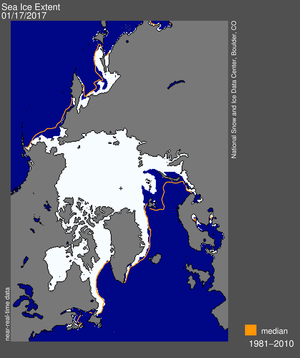...

Even if those pictures of “snow cover” are misleading, they don’t matter much either way in terms of the long-term effects from greenhouse heating. Increased snowfall is a common response to greenhouse heating in certain regions, since the warmer air can hold more moisture, so long as it’s still cold enough to snow within that region.
Paul may recall how "Global Warming Won't Stop Snowstorms"... “People may know the expression, ‘It’s too cold to snow’ — if it’s very cold, there is too little water vapor in the air to support a very heavy snowfall, and if it’s too warm, most of the precipitation will fall as rain,” O’Gorman said. “Snowfall extremes still occur in the same narrow temperature range with climate change, and so they respond differently to climate change compared to rainfall extremes or average snowfall.”
===
...I would have to say it looks like a 20 year trend towards loss of ice in the Arctic. Whether that is a long-term trend or just for those two decades, I cannot say. But it certainly looks to me like there is less of the thick ice up there.
...There is this
NASA graph of various trend perspectives on the temperature anomaly, but that is just air temperatures.
The “ice extent” and “new ice” and “multi-year ice” are important dimensions to consider also, for gauging overall warming of the cryosphere.
They [
the measurements] are all ahead of what science predicted, for their long-term decline, in response to increased greenhouse heating.

===
But yes, the decline in thick, multi-year ice seems to be highlighted in these images below, whatever their map keys are supposed to show.

1979-2003 ucsusa.org
vs.

1980-2012 scientificamerican.com
= =

nsidc.org/data/seaice_index/ [Oct. 7, 2014]
Since there is less multi-year ice each year, more ‘new ice’ develops and melts away during the yearly cycles nowadays, so the changes related to albedo as well as '
flux in heat capacity' are much greater nowadays. No scientists will admit to a direct linkage,
yet, but the effects on the Polar Jet Stream and Polar Vortex seem to have become obvious ...istm, over the past several years.
~








